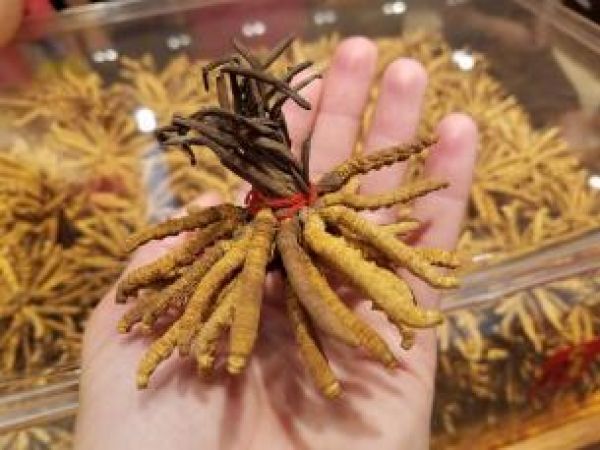A parasitic fungus that grows wild throughout the Himalayas and sells for more than its weight in gold could vanish if current harvesting and climate trends continue, according to new research from Stanford University.
The fungus, Ophiocordyceps sinensis, survives by preying on ghost moth caterpillars in some of the highest reaches of the Himalayas. The fungus infects and eats the insides of a caterpillar that burrows underground for winter. What the parasite does next may be too gruesome to mention over a supposedly healing bowl of aphrodisiac soup (price: $688) made in Las Vegas with a mere quarter-ounce of the stuff.
“It kills them and then sprouts out of their heads, like a unicorn horn,” said lead author Kelly Hopping, an ecologist who conducted the research as a postdoctoral scholar at Stanford’s School of Earth, Energy & Environmental Sciences (Stanford Earth).
Beginning in the 1990s, demand for the fungus as an aphrodisiac, impotence cure and remedy for the deadly SARS virus – while unsupported by scientific evidence – helped to jumpstart a global trade. Since then, belief in a wide range of healthful effects from the fungus has fueled a market valued at some $11 billion, as well as concern that harvesting rates have become unsustainable.
Continue reading at Stanford University
Image via Kelly Hopping, Stanford University


